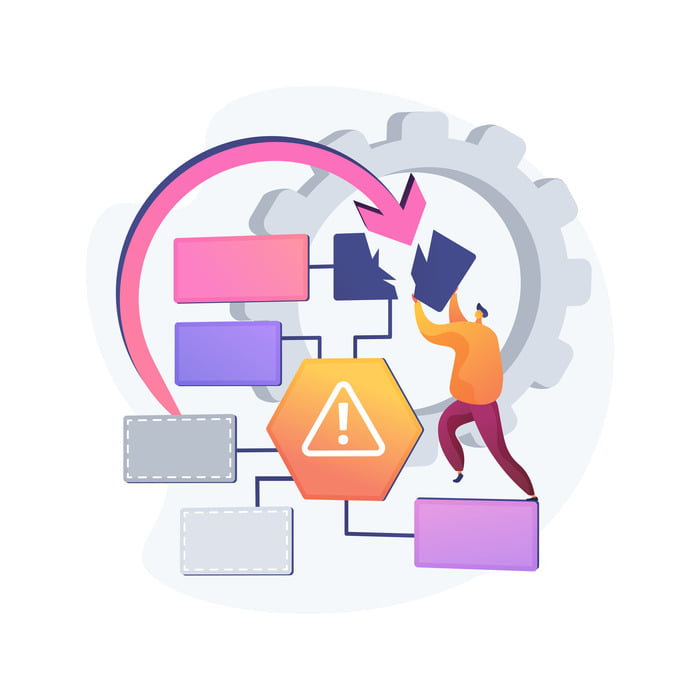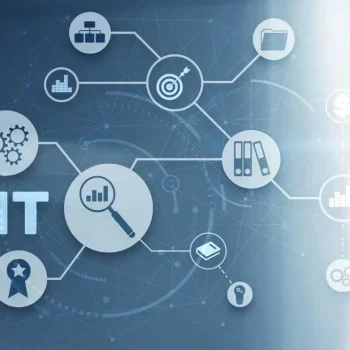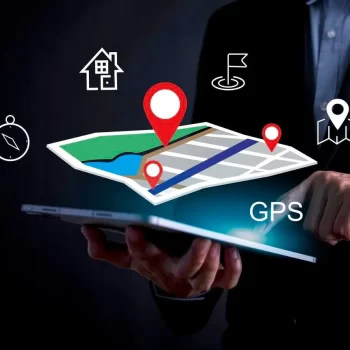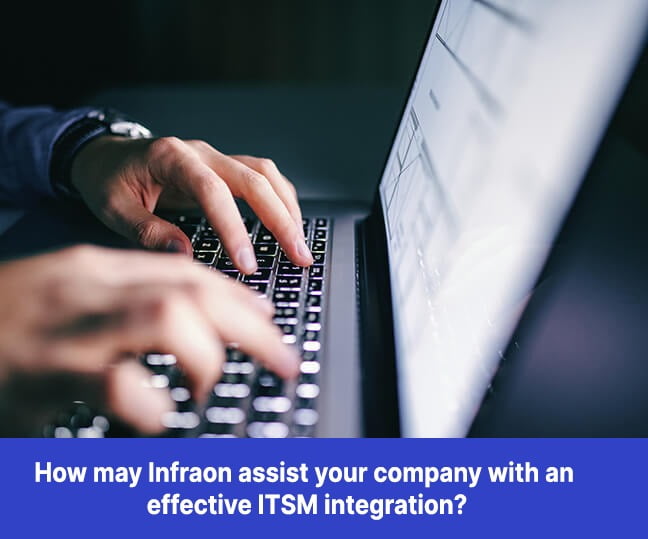Has IT infrastructure management transformed from traditional on-premises systems to a hybrid ecosystem with cloud-based solutions?
What are the primary driving forces behind this evolution, and why is it essential for organizations looking to harness the latest technological advancements for effective branch IT infrastructure management?
Systematic management of branch IT infrastructure is paramount. Each branch serves as a critical network node, contributing to overall success. The significance lies in providing seamless customer services, ensuring data security, and encouraging collaboration among geographically dispersed teams.
Recognizing this importance is the first step toward optimizing operational performance and customer satisfaction. In this blog, let’s explore the transformation from traditional on-premises systems to a hybrid ecosystem with cloud-based solutions. This management ensures that each branch contributes to the organization’s overall success.
Related blog: ITSM Consulting: A Deep Dive into Service Management Consultancy
Introducing ITSM in Branch IT Infrastructure
ITSM is a vital framework for optimizing the management of branch IT infrastructure. It encompasses practices, policies, and tools to enhance IT service delivery and quality. By implementing ITSM in branch locations, organizations can streamline operations, improve service quality, and ensure collaboration among dispersed teams.
Benefits of Implementing ITSM in Branch IT Infrastructure
The adoption of ITSM in branch IT infrastructure offers an array of substantial benefits that significantly increase the overall performance of an organization.

- Streamlined Operations: The primary advantage of implementing ITSM is the significant performance improvement. ITSM frameworks streamline IT processes and workflows, reducing downtime and ensuring IT services operate smoothly within branch locations. This streamlined operation translates into cost savings and improved customer satisfaction.
- Consistent Service Quality: By adhering to ITSM best practices, organizations can consistently deliver high-quality service across all branch locations. This consistency ensures that customers receive reliable services, which is essential for building trust and loyalty.
- Cost Savings: ITSM helps organizations identify economic solutions and optimize the allocation of resources. This, in turn, leads to cost savings by reducing unnecessary expenditures related to IT infrastructure. Improved resource management impacts the organization’s financial outcomes.
- Increased Security: ITSM frameworks incorporate security measures to safeguard data and infrastructure. These security measures help organizations protect confidential data, enhance data security, and maintain the integrity of their IT systems.
- Compliance and Governance: ITSM is instrumental in ensuring branch IT operations adhere to industry standards and regulatory requirements. This facilitates organizations adhering to relevant laws and regulations, reducing non-compliance penalties and legal issues.
Role of ITSM Tools in Streamlining Operations
The role of ITSM tools in streamlining operations is significant, as they provide a structured framework for managing and delivering IT services. Here are the key ways in which ITSM tools contribute to streamlining operations in organizations:
- Automation: ITSM tools have automation capabilities that streamline routine tasks, reducing manual effort and minimizing the potential for human errors. Automated processes also lead to faster response times and improved service delivery.
- Incident Management: ITSM tools provide a structured approach to incident management, facilitating the efficient handling of incidents such as system outages or service disruptions. The tools enable IT teams to categorize, prioritize, and resolve incidents promptly, ensuring minimal disruption to branch operations.
- Change Management: ITSM tools are important in change management, helping organizations plan, implement, and monitor changes to their IT infrastructure. These tools ensure that changes are carried out smoothly and with minimal impact on branch operations, reducing the risk of service disruptions.
- Configuration Management: ITSM tools maintain detailed records of IT assets and configurations. This comprehensive inventory helps IT teams manage and monitor the various components of branch IT infrastructure consistently. Organizations can maintain a stable and secure IT environment by reducing the risk of misconfigurations.
- Service Desk Support: ITSM tools provide a centralized platform for managing service requests, incidents, and user inquiries. This centralization streamlines support operations, allowing IT teams to respond to and resolve issues. Users can submit service requests or report incidents through a user-friendly interface, simplifying communication between branch staff and the IT support team.
The Role of Localization in IT Infrastructure Management
In IT infrastructure management, understanding the concept of localized IT support is crucial. This involves customizing IT services and solutions to cater to different regions or localities’ specific needs and preferences. Recognizing that user requirements and expectations can significantly vary from one location to another, embracing the concept of localized IT support empowers organizations to provide a more personalized IT experience to their diverse user base. This enhances user satisfaction and ensures proper utilization of IT resources.
Addressing the Challenges of Delivering Enhanced Localized Support
Providing enhanced localized support in IT infrastructure management presents formidable challenges that organizations must navigate. These challenges are critical to overcome to ensure seamless IT operations and user satisfaction:

- Compliance and Regulations: Different regions often have varying regulatory compliance, data privacy, and security mandates. Ensuring compliance with these diverse regulations while delivering IT support can be complex and demanding.
- Diverse Hardware and Software Environments: Localized support may require managing a multitude of hardware and software configurations to meet the requirements of each region. Compatibility and standardization can be significant challenges in such scenarios.
- Geographical and Time Zone Differences: Coordinating support teams across multiple locations and time zones can lead to communication and logistical challenges. Ensuring round-the-clock support without disruptions can be resource-intensive.
- Language and Cultural Variances: communication with users in different regions who may speak other languages and have diverse cultural backgrounds is crucial. Language barriers and cultural nuances can impact support interactions.
- Budget Constraints: Expanding localized support can be costly. Balancing the need for localized services with budget constraints can be a constant challenge, requiring careful resource allocation.
Utilizing ITSM for Improved Localization
Leveraging ITSM is a powerful approach to enhance localization efforts. ITSM provides a structured framework and tools to streamline and optimize IT services while customizing them to meet the unique needs of different regions. Here’s how ITSM can be harnessed for amplified localization:
- Service Catalog Customization: ITSM allows organizations to create region-specific service catalogs tailored to the requirements of local users. This customization ensures that users have access to the IT services and resources most relevant to their needs.
- Incident and Service Request Management: ITSM platforms offer centralized incident and service request management, making coordinating and responding to support issues across multiple locations more accessible. This centralized approach increases user satisfaction.
- Change Management and Standardization: ITSM frameworks often include change management processes that help organizations standardize procedures and workflows while accommodating localized variations. This ensures consistent service delivery while allowing for regional flexibility.
- Resource Allocation: ITSM can assist in optimizing resource allocation based on localized demands. It helps organizations allocate support staff and resources where most are needed, ensuring required and responsive localized support.
- Performance Monitoring and Reporting: ITSM tools provide performance monitoring and reporting capabilities. This allows organizations to evaluate the effectiveness of localized support efforts and make data-driven improvements.
By harnessing ITSM for enhanced localization, organizations can balance standardization and personalization. This approach improves performance and increases user satisfaction as users receive IT services tailored to their specific requirements and preferences.
Implementing ITSM for Branch IT Infrastructure Management
Managing IT infrastructure across different branches of an organization is a complex and critical task. Implementing ITSM can enhance the performance of branch IT infrastructure, consistency, and user satisfaction. This section will explore the essential steps in implementing ITSM for branch IT infrastructure management.
1. Assessing Current Infrastructure and Support Systems
Before implementing ITSM, it’s essential to comprehensively assess each branch’s existing IT infrastructure and support systems. This assessment should include:
- Hardware and Software Inventory: Catalog each branch’s hardware and software assets to understand the technology landscape.
- Support Processes: Evaluating the current support processes, incident management, service request handling, and problem resolution procedures.
- Staffing and Skillset Analysis: Assessing the IT staff at each branch to identify skill gaps or the need for specialized expertise.
- User Needs and Expectations: Gathering feedback from local users to understand their IT needs, expectations, and any pain points they may have.
- Performance Metrics: Review key performance metrics, such as response times, resolution times, and uptime, to identify areas for improvement.
2. Defining SLAs for Each Branch
Once the assessment is complete, the next step is to establish Service Level SLAs tailored to the specific needs of each branch. These SLAs should include:
- Response Times: Clearly defined response times for incident resolution and service requests.
- Uptime and Availability: Agreed-upon system and service availability levels to minimize downtime.
- Escalation Procedures: A well-defined escalation process for critical incidents or service disruptions.
- User Support Hours: Determining the operational hours for local IT support teams to align with branch-specific requirements.
- Data Security and Compliance: Ensuring SLAs address data security, privacy, and regulatory compliance specific to each branch.
3. Adopting ITSM Best Practices for Localized Support
To provide adequate localized support, it’s vital to embrace ITSM best practices:
- Service Catalog Customization: Customize service catalogs to align with the unique IT needs of each branch. This ensures that users have access to relevant services and resources.
- Incident and Request Management: Implement ITSM tools for incident and request management, enabling centralized tracking and resolution while accommodating regional variations.
- Standardization and Flexibility: Strike a balance between standardization and regional flexibility in IT processes. Ensure that localized support is essential while addressing regional requirements.
- Performance Monitoring and Reporting: Use ITSM tools to monitor the performance of localized support efforts and generate reports to make data-driven improvements.
- User Self-Service Portals: Provide users with self-service portals tailored to their needs. These portals enable users to access IT resources, log incidents easily, and request services.
Organizations can centralize and standardize critical processes by implementing ITSM for branch IT infrastructure management while customizing services to meet branch-specific needs. This enhances operational performance and results in higher user satisfaction and a robust IT support system.
ITSM Tools and Technologies for Branch Management
Implementing practical ITSM tools and technologies is crucial for streamlined branch IT management. This section explores essential ITSM solutions to support branch IT infrastructure management.
1. Incident Management Solutions for Localized Support
Incident management solutions are critical in providing localized support and ensuring swift resolution of issues. Here’s how they contribute to branch management:
- Local Incident Handling: Incident management tools enable local support teams to track and resolve incidents specific to each branch. This results in faster issue resolution and minimizes disruptions.
- Escalation Protocols: These tools facilitate the implementation of escalation protocols to address critical incidents promptly. This ensures that severe issues are quickly brought to the attention of higher-level support.
- Knowledge Base Integration: Incident management systems can integrate with knowledge bases, allowing support staff to access region-specific solutions and best practices, improving issue resolution.
- Performance Analytics: They provide insights into incident trends and response times, enabling the identification of recurring issues and areas for improvement.
2. Change Management Systems for Seamless Integration
Change management systems are essential for implementing updates and modifications across branch IT infrastructure while maintaining operational consistency:
- Centralized Control: Change management tools provide centralized control over updates, ensuring that changes are thoroughly planned and documented.
- Testing and Rollback Procedures: These systems support testing and rollback procedures, allowing organizations to test updates before deployment and quickly revert to previous configurations in case of issues.
- Branch-Specific Changes: Change management processes can accommodate branch-specific updates, tailoring changes to meet the unique needs of different locations.
- Regulatory Compliance: They help ensure changes align with regional regulatory compliance requirements, minimizing non-compliance risk.
3. Configuration Management Databases for Consistency

Configuration Management Databases (CMDBs) are instrumental in maintaining IT infrastructure consistency and providing comprehensive information about configuration items:
- Standardization: CMDBs support standardization by ensuring that configurations are consistent across all branches, reducing the risk of configuration-related issues.
- Resource Visibility: They provide visibility into the configuration of IT resources, aiding in efficacious management and troubleshooting.
- Change Impact Analysis: CMDBs help assess the impact of changes on configurations, allowing for proactive risk mitigation.
- Branch-Specific Data: CMDBs can include branch-specific data, such as localized hardware configurations and software versions.
- Integration with ITSM: CMDBs can integrate with ITSM systems, ensuring that information on configuration items is readily available for incident and change management.
By integrating these ITSM tools and technologies into branch IT infrastructure management, organizations can enhance localized support, seamlessly implement updates, and maintain operational consistency while meeting the unique needs of each branch.
Related article: Can your IT Infrastructure be the cause of the low efficiency of your IT Operations?
Final Thoughts:
In conclusion, transforming traditional on-premises systems into a hybrid ecosystem with cloud-based solutions is essential for optimizing branch IT infrastructure management. Each branch is vital in delivering seamless customer services, ensuring data security, and promoting collaboration among geographically dispersed teams.
ITSM tools automate processes, manage incidents and changes, and maintain configuration consistency, which is pivotal in achieving these benefits. Leveraging ITSM for enhanced localization balances standardization and customization, improving operational performance and user satisfaction.
By implementing practical ITSM tools, organizations efficiently manage incidents, implement updates, maintain configuration consistency, and support branch-specific requirements, streamlining operations and enhancing branch IT infrastructure management. This ensures that each branch contributes to the organization’s overall success, allowing organizations to thrive in a digitally connected world.



















